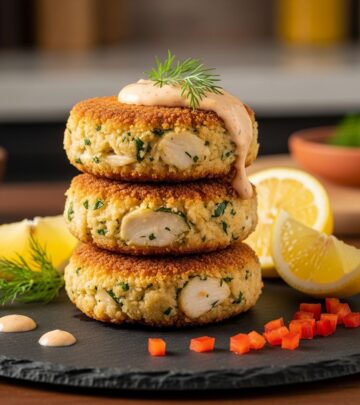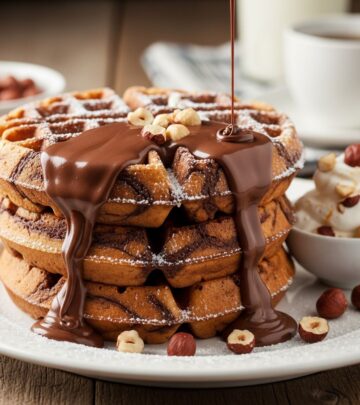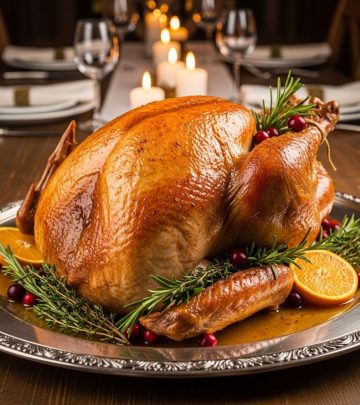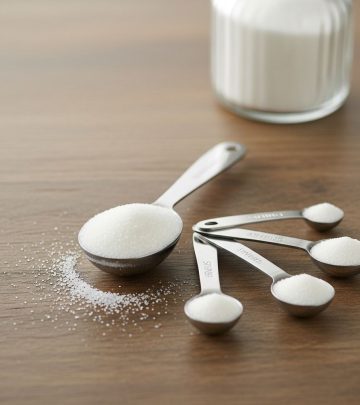How to Candy Flower Petals: A Step-by-Step Decorative Guide
Master the delicate art of candying fresh flower petals for elegant, edible decoration on desserts and special occasions.
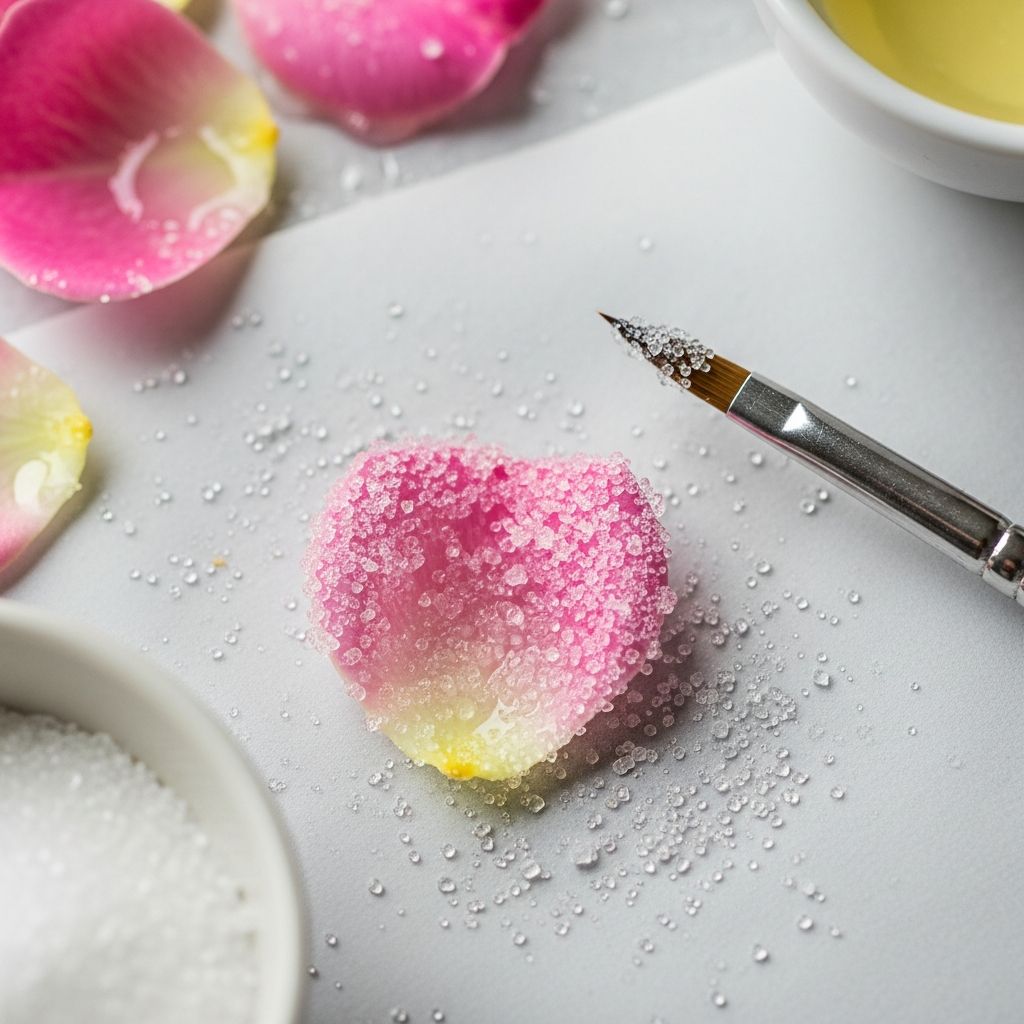
How to Candy Flower Petals: Decorative, Edible Elegance
Candied flower petals elevate any dessert, cocktail, or celebration. These sparkling edible gems are as tasty as they are beautiful, offering a burst of color and a delicate crunch that can transform cakes, cookies, and beverages into works of art. This comprehensive guide will walk you through every step of candying flower petals, from selecting the right blooms to arranging your finished decorations, while sharing essential tips for safety and preservation.
Table of Contents
- Introduction to Candied Flower Petals
- Choosing Edible Flowers
- Safety and Sourcing
- Ingredients and Tools
- Step-by-Step Instructions
- Creative Uses for Candied Petals
- Storage, Shelf Life & Troubleshooting
- Frequently Asked Questions
Introduction to Candied Flower Petals
Candying flower petals is a traditional culinary technique, prized by both professional patissiers and home bakers seeking to add natural beauty to their creations. The process involves coating edible flowers in sugar, preserving both their shape and color while enhancing their subtle flavors. Whether you are aiming for stunning wedding cakes, whimsical cupcakes, or sophisticated cocktails, candied petals offer an elegant, nature-inspired garnish.
Choosing Edible Flowers
Not all flowers are edible, and some can be toxic. Carefully select blooms that are known to be safe for consumption. Below is a list of popular edible flowers ideal for candying:
- Roses
- Violets (including pansies and Johnny-jump-ups)
- Lavender
- Calendula
- Chamomile
- Jasmine
- Hibiscus
- Chive flowers
- Dianthus (pinks)
- Marigold (edible varieties only)
- Peach, apple, and citrus blossoms
Freshness is key: The best results come from vibrant, freshly picked flowers that have not wilted or browned. For optimal flavor and safety, choose blooms from organic gardens or reputable markets and avoid roadside or florist flowers that may have been treated with chemicals.
Safety and Sourcing
- Confirm identification: Ensure you have accurately identified the flower species. When in doubt, consult a reputable edible flower reference.
- Confirm edibility: Only use flowers labeled as edible.
- Pesticide-free only: Never use flowers exposed to pesticides, fungicides, or herbicides.
- Source responsibly: Best practices include harvesting from your own garden or sourcing certified-organic edible flowers.
- Preparation tip: Remove stems, stamens, and pistils unless eating the whole small flower; only the petals are usually candied, as these are the tenderest and safest parts.
Note: Pregnant women, children, the elderly, and immunocompromised individuals should avoid consuming raw egg whites typically used in the candying process. Safe alternatives such as pasteurized egg whites or aquafaba can be substituted (see FAQ).
Ingredients and Tools
Candying petals is a simple process requiring a minimal list of ingredients and basic kitchen tools.
Ingredients
- Freshly picked edible flowers (about 30 petals or small whole blooms)
- 1 large egg white (preferably pasteurized)
- 1/2 cup superfine or granulated sugar (superfine gives a more delicate finish)
Tools
- Small, soft paintbrush or pastry brush (new, food-safe)
- Slotted spoon or tweezers (for delicate handling, optional)
- Wire cooling rack
- Baking sheet (to catch drips)
- Parchment paper (optional, for easy cleanup)
- 2 small shallow bowls (for egg white and sugar)
- Kitchen towels or paper towels
Step-by-Step Instructions
Follow these steps to create perfectly crystallized petals:
- 1. Prepare Flowers:
- Gently pluck petals from edible flowers, or use whole small blooms for visual interest.
- Rinse in cool water to remove dirt and insects, then lay on kitchen towels and carefully pat completely dry. (Even a drop of water will prevent sugar from adhering.)
- 2. Prepping Ingredients:
- Separate the egg white into a bowl. Lightly whisk until just frothy—not stiff.
- Place sugar in a shallow bowl or on a plate.
- 3. Coating Petals:
- With a soft brush, paint a thin, even layer of egg white on both sides of each petal. Ensure coverage, but avoid soaking the petal, which might cause it to wilt.
- 4. Applying Sugar:
- Hold the petal over the sugar bowl. Sprinkle or gently dip both sides into the sugar until completely coated.
- Tap gently to remove excess sugar.
- 5. Drying:
- Arrange sugared petals on a wire rack set over a baking sheet.
- Allow at least 12-24 hours to dry at room temperature, away from humidity. The petals should become crisp and brittle to the touch.
- 6. Storing:
- Once fully dry, store petals in a single layer in an airtight container. Use wax paper to separate any layers.
- Best used within 48 hours for maximum crispness, though they may last longer if well sealed.
Tips for Best Results
- Work with *completely dry* petals to prevent clumps and ensure even coating.
- Humidity slows drying—if needed, use a fan on low or dry in an air-conditioned room.
- Use *superfine sugar* for a more delicate crunch and sparkle.
- Do not refrigerate finished petals—moisture can cause them to dissolve or become sticky.
Creative Uses for Candied Petals
Candied petals are versatile. Their light sweetness and jewel-like appearance make them perfect for:
- Cake decoration: Scatter them on wedding cakes, spring cakes, or whimsical birthday cakes for a natural, elegant finish.
- Cupcakes & cookies: Place whole or fragmented petals atop frosted cupcakes and cookies.
- Cocktails: Float on the surface of drinks for a festive look—great for parties!
- Chocolate bark: Press into homemade chocolate slabs before the chocolate sets.
- Ice cream & desserts: Top custards, sorbets, pavlovas, or panna cotta for textural interest and visual appeal.
- Gift packaging: Jarred candied petals make an impressive homemade gift.
Storage, Shelf Life & Troubleshooting
How to Store Candied Petals
- Store in a moisture-free, airtight container.
- Use wax paper between layers to prevent sticking.
- Do not refrigerate or freeze finished petals.
The ideal shelf life is 1-2 days at normal humidity. Drier environments may extend this window. Petals will gradually lose crispness but retain most of their decorative appeal.
Troubleshooting Common Issues
| Problem | Cause | Solution |
|---|---|---|
| Sticky or soft petals after drying | Too much humidity, under-drying, or excess egg white | Allow more drying time; use less egg white; dry in a less humid space |
| Sugar won’t stick | Petals damp, not enough egg white, or too much water in mixture | Ensure petals are dry before coating; gently blot if needed |
| Petals wilt or discolor | Egg white too heavy, petals picked too long before use | Brush lightly and use only fresh petals |
Frequently Asked Questions (FAQs)
Q: Are all flowers safe to eat and candy?
A: No. Only use flowers specifically identified as edible and that are free from pesticides, fungicides, and other chemicals. Always confirm species before consuming.
Q: Can I use dried flowers instead of fresh?
A: Some sturdy dried flowers can be candied, but fresh petals provide the best texture and vibrant appearance.
Q: What are alternatives to raw egg white for those with dietary restrictions?
A: Pasteurized egg whites or aquafaba (chickpea brine) are popular substitutes. They provide similar adhesive properties without the risk of salmonella.
Q: How long do candied petals last?
A: They’re best within 24-48 hours, but if stored in perfectly dry, airtight containers with wax paper layers, they may last up to 5 days in low-humidity environments.
Q: What other sweeteners can I use?
A: While superfine white sugar is traditional, you can experiment with sanding sugar or colored sugar for decorative effect. Avoid moist sugars like brown sugar, which will not crystallize properly.
Q: Why did my petals turn brown or lose color?
A: Excess egg white, too much liquid, or exposure to direct sunlight while drying can cause discoloration. It’s best to dry out of direct sun in a well-ventilated spot.
Summary and Final Tips
With a handful of ingredients and a gentle touch, anyone can master the art of candying flower petals. The result: exquisite, shimmering decorations that capture the ephemeral beauty of fresh blooms in a sweet, crisp form. Enjoy them on your next masterpiece, or simply as a charming treat in their own right—and share the results for a guaranteed conversation starter at your next gathering!
References
- https://frolicandfare.com/candied-flower-petals/
- https://leitesculinaria.com/104920/recipes-candied-rose-petals.html
- https://www.langbein.com/learn/how-to-make-candied-petals
- https://abeautifulmess.com/how-to-candy-flower-petals/
- https://www.youtube.com/watch?v=TIN6K-YUNvs
- https://www.youtube.com/watch?v=OlU7lN6gni0
- http://blog.lilyandval.com/in-the-kitchen/candied-rose-petals.html
- https://dk.pinterest.com/pin/475129829459247699/



